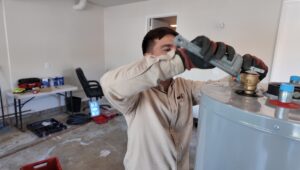 An old home has that charm and historical value many homeowners cherish. Yet with this charming structure come challenges, especially in the electrical department. Its electrical wiring of this old model was not up to the mark for many modern appliances and technology requirements, which were posing safety hazards and operational problems. This article will try to bring out common electrical faults likely to be found in old homes and offer specific advice on the way to identify, correct, and prevent a recurrence of those faults. Understanding and addressing such issues can help homeowners guarantee their home is safe, functional, and preserved for future generations, while at the same time maintaining that aesthetic and historic value that make these homes so special.
An old home has that charm and historical value many homeowners cherish. Yet with this charming structure come challenges, especially in the electrical department. Its electrical wiring of this old model was not up to the mark for many modern appliances and technology requirements, which were posing safety hazards and operational problems. This article will try to bring out common electrical faults likely to be found in old homes and offer specific advice on the way to identify, correct, and prevent a recurrence of those faults. Understanding and addressing such issues can help homeowners guarantee their home is safe, functional, and preserved for future generations, while at the same time maintaining that aesthetic and historic value that make these homes so special.
Common Electrical Problems in Old Homes
Outdated Wiring Systems
Some of the really old wiring systems that can be found in old homes are knob and tube and aluminum. These systems are grossly inefficient and actually quite dangerous, since they were never meant to serve today’s kitchen appliance and gadget loads. Knob-and-tube wiring, commonly used in houses built before the 1950s, does not have a grounding system. That system, therefore, exposes the residents to a high electrical shock risk and fires. Similarly, aluminum wiring used during the 1960s and 1970s is bound to get loose over time, leading to overheating and probably even fire. Examples of such systems include looking for an old ceramic knob with tubes or silver-coloured wires instead of the standard copper. This is where homeowners should humanly observe as such a system, with an increase in age, could deteriorate and pose potential safety hazards.
Your electrical panels are under-sized
Most older homes come with electrical panels that were fine and served the period in which the home was built; now they fall far short of today’s electrical needs. Overload of the circuit, tripped breakers, and fire hazard cases usually exist in these older-style panels because modern households draw much more power than is used, say, even a generation ago. Other indications that one has an electrical panel that is too small include finding the breaker constantly tripped, or having to turn off one appliance in order to use another, or perhaps rust and damage are already showing on the panel. Upgrading these panels is not a question of capacity addition; it’s a question of improved safety, ensuring that the electrical system can fully support everyday use without posing any risks.
Lack of Bonding and Grounding
The two primary safety precautions in any electrical system include grounding and bonding. The two offer a safe path for conducting extra electricity, therefore preventing electrical shocks and fires. Most of these features are either lacking or highly misapplied in older homes, hence bringing about great danger. This can be particularly risky in premises where there is high electrical activity, for instance, in kitchens and bathrooms. Place a grounding rod close to your electric service or check your home outlets: two-prong (ungrounded) or three-prong (grounded). Correcting these issues frequently involves installing additional grounding rods, updating outlets to three-prong models, and ensuring that every electrical system is bonded and grounded up to modern standards.
Addressing Electrical Problems in Old Homes
Inspection and Assessment
First of all, professional inspection is necessary if an old home is thought to have any electrical problems. Any licensed electrician specializing in older homes should be able to point out problems that would go unnoticed by a layman. The home electrician will inspect the panels, outlets, and even the safety features against some signs of aging, suchjsons as wear, and even some safety violation, which may be present. Homeowners preparing for this inspection should list any potential problems or concerns and discuss them with the electrician ahead of time. This ensures that all potential problems are identified, and the home is brought up to the current standards of the electrical system.
Upgrade Your Electrical Wiring and Panels
Really, replacing electrical wiring and the panel in an old home was no little feat but most necessary to ensure continued safety and functionality. This would involve choosing the right material for the job: that is, copper wiring, by all means, because of durability and safety. In addition, this is the importance of choosing the right panel with sufficient capacity to meet the present and future needs. Upgrading involves taking out old wires, putting in new ones, and changing the old panel to a new one that has circuit breakers for safety. I need to work with a qualified electrician who knows exactly what to do with the 19th-century character of my house, but, at the same time, I need to find an honest team that understands all the pitfalls: local building codes, etc. The local homeowners are also human and should thus be aware of the local building codes in their county. They must pull permits for their required electrical upgrades before they can be done.
Install Additional Security Features
Make the safety system modern: Install modern safety devices, like ground-fault circuit interrupters (GFCIs) and arc-fault circuit interrupters (AFCIs), with an updated old electrical system in the home, to bring the outdated safety system up to modern codes. In other words, GFCIs are very essential in places where electricity is in close proximity to water, for example, in bathrooms and kitchens. The moment an imbalanced signal is detected, they instantly disconnect the power from the source, thus, avoiding any probable fatality by electric shock. AFCIs protect against fires of electrical origin resulting from arcing. AFCIs work in a series with the devices, interrupting the electrical circuit path should an arc be detected. These can also be retrofjsonct into the old electrical system and are important improvements for older homes, which often do not have such modern safety features. Installation includes replacing the old one with GFCI and AFCI models during installation, making sure that the wiring is all appropriately compatible with these for the safest usage.
Preventive Measures and Maintenance
That’s the way of providing durability and safety: the electrical system in an old home should keep going. Homeowners are recommended to check professionally in time to identify possible problems and remove them before further development. Other basic tasks like checking for frays on the wires, ensuring the outlets are not overloaded, replacing old or faulty components would ensure an improved safety standard. Keeping up with the maintenance of the power system is not just a safe-keeping measure for the electrical system; it keeps the home and the history of the home looking pretty.
Conclusion
Managing the electrical system in an old home really walks the tightrope between safety, functionality, and historic preservation. Armed with the knowledge of the common problems and how to address them, as outlined in this comprehensive guide, and taking proactive steps to the necessary repairs and maintenance, homeowners can enjoy old-home charm with assurance that it is a safe and modern convenience for their family. Mixing the beauty of the past with the needs of the present, hence, it assured that there will always be a safe and cherished residency in the long run.






